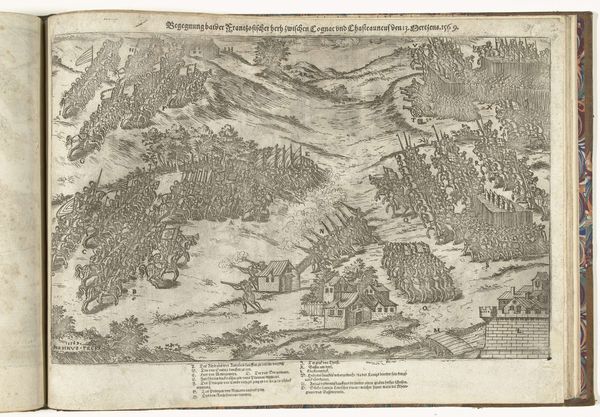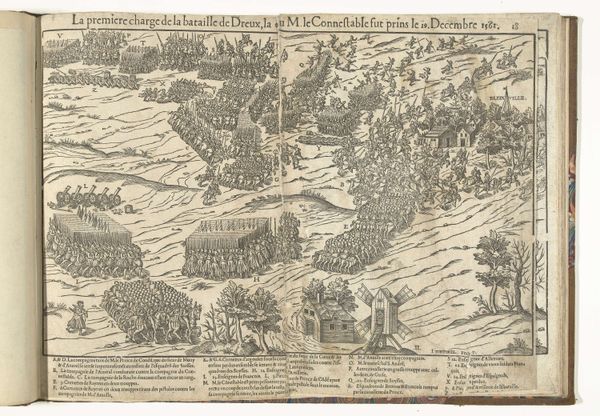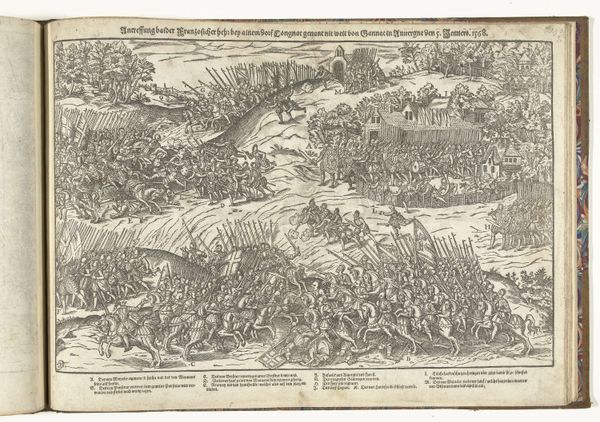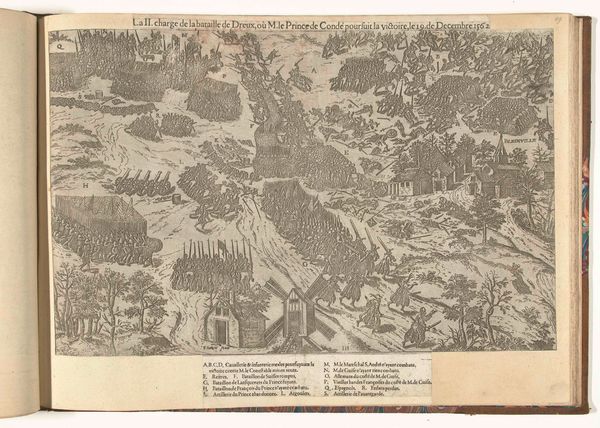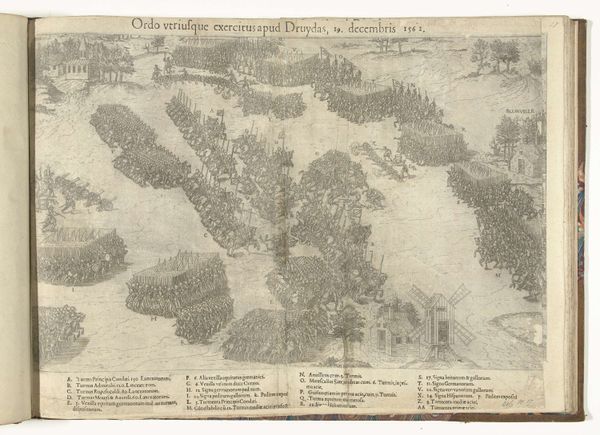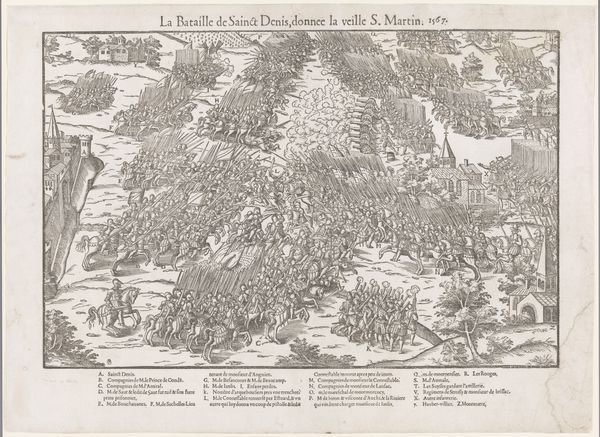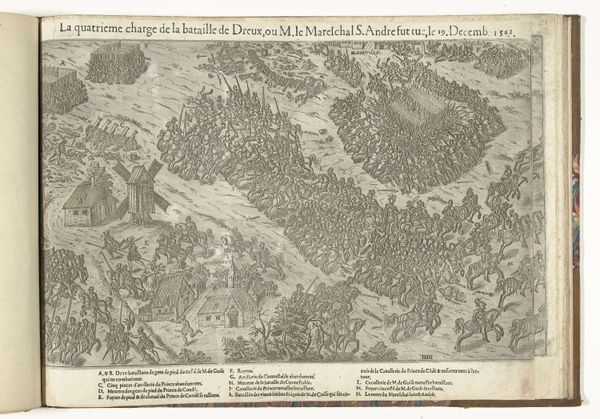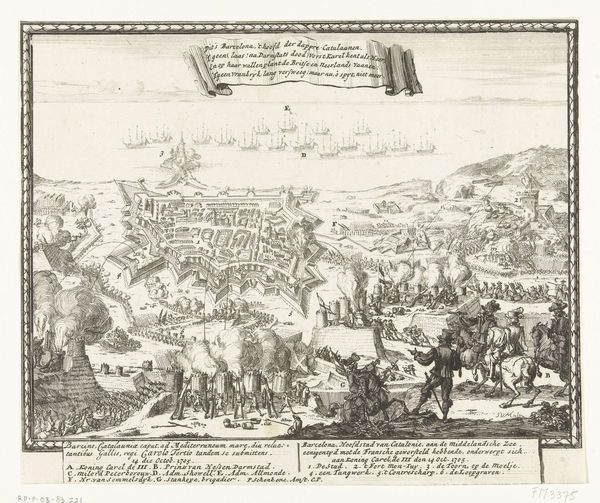
print, engraving
#
narrative-art
# print
#
landscape
#
mannerism
#
history-painting
#
engraving
Dimensions: height 386 mm, width 505 mm
Copyright: Rijks Museum: Open Domain
Curator: Looking at this print, "Slag bij Dreux, derde treffen, 1562," created by Jean Perrissin in 1570, it’s hard not to feel overwhelmed by the sheer density of figures, isn't it? It is quite something. Editor: Absolutely, an intense scene. My eye is immediately drawn to the ordered chaos; bodies intertwine with weaponry, the air thick with what I imagine to be the sounds of battle. I'm seeing so much Mannerist detail. Curator: This engraving depicts the Battle of Dreux, a significant engagement during the French Wars of Religion. What is fascinating is its dual function, a piece of art and a socio-political declaration. Prints like these were propaganda tools. Editor: Propaganda makes complete sense. Beyond the obvious narrative, it is rife with symbolism. Take the placement of the windmill in the bottom left, it immediately struck me—they carry profound cultural connotations. Is there any historical context to these specific symbols in the Wars of Religion? Curator: Yes. Religious wars fueled propaganda that exploited common cultural understanding to rally support. Here the windmill, although an interesting focus, signifies perhaps that despite turbulence, French identity grinds forward, ever onward, like a great machine. It becomes an implicit support for the Catholic side in the conflict. Editor: That’s an insightful observation, this sense of relentless grinding, mirrored by the landscape. But consider too the uniforms – not just representations of men, but markers of alignment with broader ideological currents. These Wars became deeply woven into the cultural memory, shaped by such loaded imagery. Curator: Precisely. Perrissin, like other artists, navigated this charged atmosphere. Note how even the aerial perspective is strategic, a godly vantage, suggesting providence. Editor: This bird’s-eye view elevates it above the individual struggle. The battle, rendered into art, enters the realm of collective memory, forging and hardening over time. Curator: It leaves you to consider what we do with violent imagery. What purpose does it serve us centuries later? Are we still engaged in that process of remembering and misremembering? Editor: That question, always lingering, propels us forward to better understand ourselves and how we reconcile these images. What we carry onward with us through time...
Comments
No comments
Be the first to comment and join the conversation on the ultimate creative platform.

